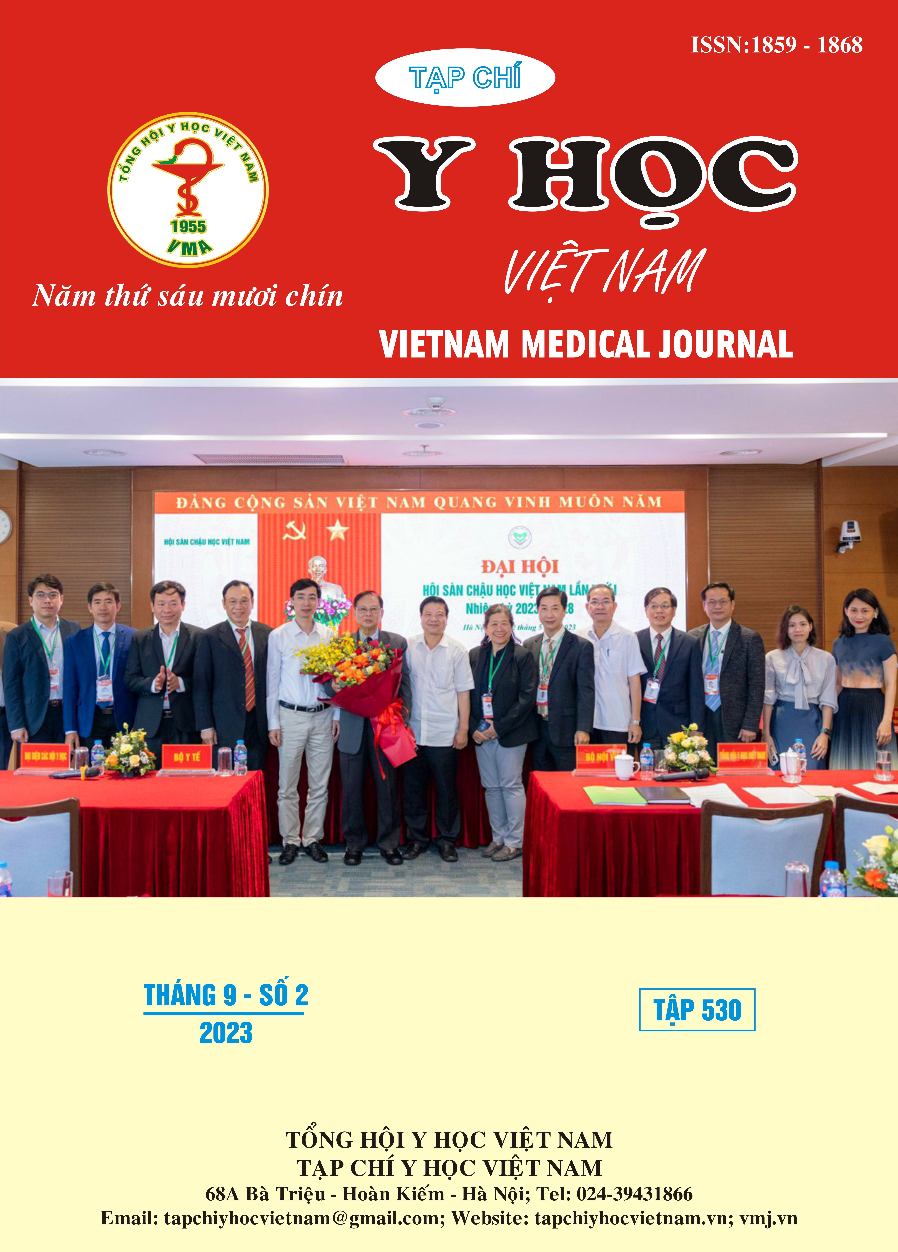STUDY ON THE MORPHOLOGICAL CHARACTERISTICS OF SOME LIMBIC SYSTEM STRUCTURES ON MAGNETIC RESONANCE IMAGING IN ALCOHOLIC PATIENTS
Main Article Content
Abstract
Introduction: Chronic alcohol addiction has been shown to not only affect the size and structure of the brain, but also its function. Objective: to evaluate the relationship between alcohol addiction and changes in hippocampus structure on magnetic resonance imaging (MRI). Methods: A cross-sectional descriptive study was conducted from January 2020 to June 2022 at Thai Nguyen National Hospital. The Stepwise AIC method was used to determine the optimal model related to the volume of the hippocampal gray matter. Results: A total of 140 male patients were selected to participate in the study with a ratio of alcohol addicted to non-alcohol addicted being 1:1. The optimal model suggested a statistically significant relationship between alcohol addiction status and the aforementioned volume measurements. In addition, the intracranial volume was found to be positively correlated with hippocampal gray matter volume. However, age was found to have a negative correlation with hippocampal gray matter volume. Conclusion: Our study provides strong evidence of a relationship between alcohol addiction status and lower hippocampal gray matter volume.
Article Details
Keywords
Hippocampus, Magnetic resonance imaging, alcoholism
References
2. Yang Y. và Wang J.-Z. (2017), From Structure to Behavior in Basolateral Amygdala-Hippocampus Circuits. Front Neural Circuits, 11, 86.
3. American Psychiatric Association và American Psychiatric Association, btv, (2013), Diagnostic and statistical manual of mental disorders: DSM-5, American Psychiatric Association, Washington, D.C.
4. Lee J., Im S.-J., Lee S.-G. và cộng sự. (2016), Volume of hippocampal subfields in patients with alcohol dependence. Psychiatry Res Neuroimaging, 258, 16–22.
5. Tomasi D., Wiers C.E., Manza P. và cộng sự. (2021), Accelerated Aging of the Amygdala in Alcohol Use Disorders: Relevance to the Dark Side of Addiction. Cereb Cortex, 31(7), 3254–3265.
6. Erdozain A.M., Morentin B., Bedford L. và cộng sự. (2014), Alcohol-Related Brain Damage in Humans. PLoS ONE, 9(4), e93586.
7. Martin P.R. và Hiller-Sturmhöfel S. (2003), The Role of ThiamineDeficiency in Alcoholic Brain Disease. 27(2).
8. Eskay R.L., Chautard T., Torda T. và cộng sự. (1995), Alcohol, Corticosteroids, Energy Utilization, and Hippocampal Endangerment. Ann N Y Acad Sci, 771(1 Stress), 105–114.
9. Anblagan D., Valdés Hernández M.C., Ritchie S.J. và cộng sự. (2018), Coupled changes in hippocampal structure and cognitive ability in later life. Brain Behav, 8(2), e00838.


